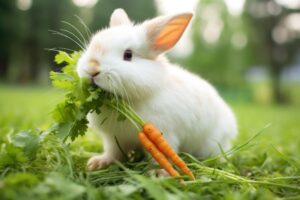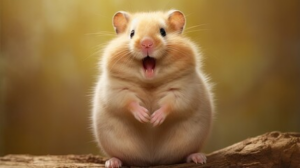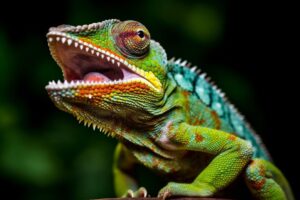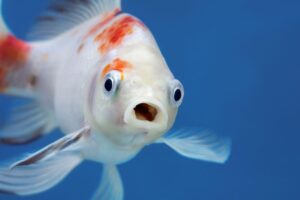 How do our pets get their nutrition? They eat with their mouths, just like us! Did you know that pets need healthy mouths, too? Their teeth are designed specifically for the foods that each animal consumes. Although the office has a theme, Jungle Roots Dentistry is only for human animals! For fun, though, let’s talk about our pets at home. We will get to the “meat and potatoes” of the matter, whether our pets are carnivores or vegetarians!
How do our pets get their nutrition? They eat with their mouths, just like us! Did you know that pets need healthy mouths, too? Their teeth are designed specifically for the foods that each animal consumes. Although the office has a theme, Jungle Roots Dentistry is only for human animals! For fun, though, let’s talk about our pets at home. We will get to the “meat and potatoes” of the matter, whether our pets are carnivores or vegetarians!
CATS
 Kittens are born without teeth. They do not need them as they will be nursing and getting their milk from their mother. Within the first month, their “milk” teeth come in. At eight weeks of age, a kitten should have 26 teeth. When they age to around three months, they start to lose their “kitten teeth,” replacing them with adult teeth.
Kittens are born without teeth. They do not need them as they will be nursing and getting their milk from their mother. Within the first month, their “milk” teeth come in. At eight weeks of age, a kitten should have 26 teeth. When they age to around three months, they start to lose their “kitten teeth,” replacing them with adult teeth.
When a cat is six months old, they usually have all their adult teeth, a complete set of 30! No matter the breed, all cats have the same number of teeth. They do not chew their food; they tear and shred it to make it a size they can swallow.
Believe it or not, cats don’t get cavities! They can have other dental diseases like gingivitis, and sometimes their teeth reabsorb below the gum line. This condition is called feline odontoclastic resorptive lesions (FORLs). If you notice your cat loses their appetite, drools a lot, has bad breath, or blood in their saliva, it may be time to have a veterinarian check their teeth.
DOGS
 Our dogs also are born without teeth. They get baby teeth that fall out, and permanent teeth replace them. By the age of 3-7 months, all their 42 adult teeth are in. The upper jaw has 20 teeth, and the bottom jaw has 22.
Our dogs also are born without teeth. They get baby teeth that fall out, and permanent teeth replace them. By the age of 3-7 months, all their 42 adult teeth are in. The upper jaw has 20 teeth, and the bottom jaw has 22.
A dog’s teeth are prone to decay, as they easily form plaque. Just like with humans, a high-carb diet can cause cavities to form over time. Bacteria and other germs can build up and cause disease. Did you know that dogs need to have their teeth brushed every day – and they have special toothbrushes and toothpaste to protect their teeth?! They also benefit from a dental exam and cleaning at least once a year. If cavities get too far advanced, the vet may need to remove diseased teeth for your dog to comfortably eat and chew like they did before.
BUNNIES
 Bunnies have a total of 28 teeth when they are full-grown. The bottom incisors are longer than the top, and the bottoms rest behind the top teeth when their mouths are shut. The third set of incisors, the “peg teeth,” are just behind the front top teeth. These incisors bite off the bunny’s food, then their tongue moves it to the back to be chewed.
Bunnies have a total of 28 teeth when they are full-grown. The bottom incisors are longer than the top, and the bottoms rest behind the top teeth when their mouths are shut. The third set of incisors, the “peg teeth,” are just behind the front top teeth. These incisors bite off the bunny’s food, then their tongue moves it to the back to be chewed.
Did you ever notice that a bunny grinds its back teeth from side to side when chewing? That is because the “cheek teeth” do not meet. The bottom is wider than the top, so they must grind their food in this way.
One unique aspect of a bunny’s teeth is that the incisors continue to grow throughout their lives. They need fibrous foods to keep their incisors from extending too far. If incisors get too long, a bunny cannot eat and may have other dietary problems. Your bunny may need a vet to shorten their incisors if they become too long. Don’t worry – it doesn’t hurt!
HAMSTERS
 Hamsters are born with 16 teeth that they keep for their lifetime. They have two incisors on the top and two on the bottom of the front of their mouth, continually growing. The hamster cuts off, grabs its food with its incisors, and immediately pushes the food to the back of the mouth, where their cheek teeth grind it down.
Hamsters are born with 16 teeth that they keep for their lifetime. They have two incisors on the top and two on the bottom of the front of their mouth, continually growing. The hamster cuts off, grabs its food with its incisors, and immediately pushes the food to the back of the mouth, where their cheek teeth grind it down.
Hamsters have a special enamel on their teeth, which darkens the older they get. This enamel begins below the gumline and can be yellow or brown. It is usual for them to have this discoloration.
Because hamsters love to chew, you should give these little ones some wood to gnaw on. The wood helps their incisors stay sharp and keeps them from overgrowing. It is essential to feed them a diet of seeds and pellets formulated especially for them. They can have fresh produce as well, but sparingly.
LIZARDS
 Lizards have fascinating teeth. The kind of lizard you are talking about determines the type of teeth. Most lizards are carnivores (meat eaters). Small lizards can eat insects such as crickets and ants, while giant lizards can kill and eat a large animal as big as a cow!
Lizards have fascinating teeth. The kind of lizard you are talking about determines the type of teeth. Most lizards are carnivores (meat eaters). Small lizards can eat insects such as crickets and ants, while giant lizards can kill and eat a large animal as big as a cow!
A lizard uses their teeth for eating and fighting. When eating, they use them to rip the flesh from the bones and others to grind down the food before swallowing it. LIzards have acrodont and pleurodont teeth. (Crocodilians, which are also reptiles, have a different type of teeth called thecodont teeth.)
- Acrodont teeth:
- Sharp and pointy
- Used for chewing food
- Fit together neatly, top and bottom
- Only weakly affixed to the jawbone
- Can be lost but are never regrown
- Are found in chameleons, frilled dragons, and more
- Pleurodont teeth:
- Sharp and jagged
- Used for cracking and crunching hard foods
- Long roots attached to the jawbone
- Can be replaced if lost
- Are found in iguanas, geckos, varanid monitors, and more
Only a few lizards have both. The pleurodont teeth are in the front, and the acrodont teeth are in the back of the oral cavity. They grab the food, tear it with the pleurodont teeth, and then move it to the back of the mouth. Here, the acrodont teeth grind and chew it into small pieces to swallow. Some types of bearded dragons have both acrodont and pleurodont teeth.
FISH
 When you make a “fish face,” do you use your teeth or just your lips? Just the lips, right? Well, all fish have teeth. Yes, that’s a fact. The location of the teeth in the fish depends on the species and diet. Fish lose and regrow teeth all of the time.
When you make a “fish face,” do you use your teeth or just your lips? Just the lips, right? Well, all fish have teeth. Yes, that’s a fact. The location of the teeth in the fish depends on the species and diet. Fish lose and regrow teeth all of the time.
- Carnivorous Fish
- Eat proteins (meat), e.g., other fish, insects, and small animals
- Canine teeth grab and hold their prey while incisors grind the flesh
- Flat molars are for crushing up food with shells, like crabs and snails
- Herbivorous Fish
- Feed on plants and algae
- Incisors grab and break down the cut vegetation
- Incisors can be singular or melded together in the front of the mouth
We don’t need to worry about most fish we keep as pets. Their mouths are often too small to cause harm to humans!
All Creatures’ Teeth are Important!
So, what kind of teeth does your pet have? It depends on the type of pet you have at home! Like the staff here at Jungle Roots Dentistry care for human teeth, your veterinarian can care for your pet’s teeth. They can give you tips to keep your pet’s mouth healthy, like we do here for yours. We would love to hear about your favorite pet and its fascinating teeth at your next appointment!














